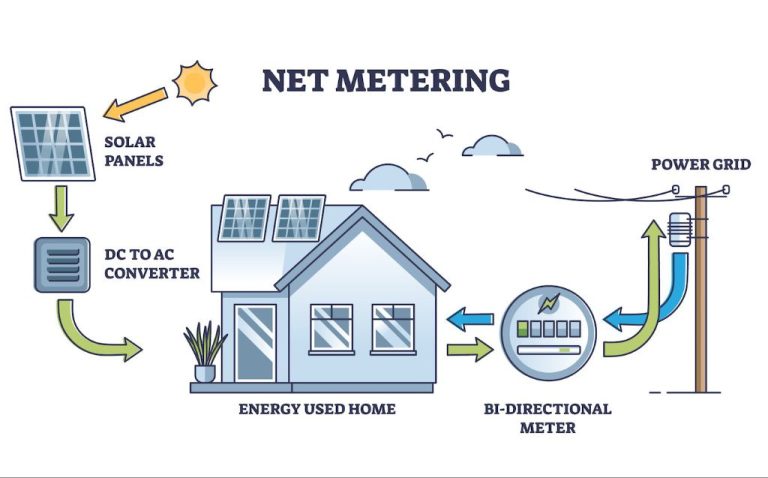Does Solar Power Have A Future?

As the world grapples with climate change and looks to transition away from fossil fuels, the future of solar power has become a critical question. Solar energy is rapidly expanding as an emissions-free renewable source that could help meet growing electricity demand while combating global warming. However, questions remain about the scalability and competitiveness of solar technology. This article will examine the current state and future prospects of solar power, analyzing its benefits, limitations, and role in the ongoing clean energy transition. With climate and energy challenges intensifying, understanding solar power’s potential will be key to mapping the path forward.
Current State of Solar Power
Solar power capacity has grown significantly in recent years, but still accounts for only a small percentage of overall energy generation globally. According to the International Energy Agency (IEA), global solar photovoltaic (PV) capacity reached over 580 gigawatts (GW) by the end of 2019, supplying about 2.4% of global electricity demand. The top countries for total installed solar PV capacity include China, the United States, Japan, Germany, and India (Source).
In the United States, solar power capacity has expanded rapidly, growing from less than 1 gigawatt in 2010 to over 75 gigawatts by the end of 2020, according to the Solar Energy Industries Association (SEIA). This is enough to power over 14 million American homes. The growth has been driven by falling costs and supportive policies. The SEIA projects U.S. solar capacity to more than double over the next 5 years to over 150 gigawatts by 2025 (Source).
While solar still provides a small fraction of overall power generation, growth trends indicate its role is increasing significantly. With continued technology improvements, cost declines and supportive policies, solar power is poised for strong continued expansion globally and in the U.S. in the years ahead.
Solar Technology Improvements
Solar technology has advanced rapidly in recent years, bringing down costs and improving efficiency. Key innovations include:
Thinner and more efficient solar cells: Companies are producing thinner solar wafers and cells, reducing silicon usage while maintaining efficiency. Perovskite solar cells have also shown promise as a high-efficiency, low-cost alternative.
Improved manufacturing techniques: Automation, optimized supply chains and economies of scale have significantly reduced production costs. New screen-printing and laser techniques also enhance solar cell efficiency.
Advanced solar tracking: Systems that tilt panels to follow the sun’s path throughout the day maximize energy capture. Single-axis and dual-axis trackers can increase generation 15-25% versus fixed tilt systems.
Bifacial solar panels: These panels absorb light on both sides, potentially boosting energy yield up to 50%, especially with single-axis trackers. However, optimal gains depend on factors like albedo and module height.
Improved inverters and monitoring: Smarter inverters and panel-level monitoring pinpoint and resolve issues quickly, ensuring maximum system performance.
With ongoing research and development, solar technologies will continue improving in efficiency and cost-effectiveness.
Policy Support
Government policies and incentives play a crucial role in accelerating the adoption of solar power. Tax credits, rebates, net metering, renewable portfolio standards and other subsidies have helped spur rapid growth in solar installations across the United States.
For example, the federal investment tax credit (ITC) offers a 26% tax credit for systems installed in 2020-2022, which helps offset the high upfront costs of solar panels (see Third Way). Many states and utilities also offer additional rebates and incentives on top of the ITC to encourage residential solar adoption.
Net metering policies, which allow solar customers to sell excess electricity back to the grid at retail rates, have also boosted the solar value proposition in many markets. Over 40 states have mandatory net metering rules, though some are moving towards less favorable successors as solar penetration rises (see NREL).
Renewable portfolio standards (RPS), which require utilities to source a portion of their electricity from renewables, have significantly grown utility-scale solar investment. RPS policies now exist in 29 states and D.C., with solar carveouts in many. State solar incentives vary widely, with leaders like California, New Jersey and Massachusetts among the most supportive (see Arka360).
Overall, continued policy support in the form of favorable incentives, interconnection rules, and clean energy standards will be critical to enabling mainstream solar adoption going forward.
Public Perception
Public opinion polls show broad support for solar power in America. According to SEIA, 9 out of 10 Americans support expanding solar energy production. A Pew Research poll found that 89% of Americans favor more solar panel farms, while only 9% oppose them. Reuters reported that a global survey showed 68% support for solar power, making it the most popular energy source surveyed.
Consumers tend to see many pros to solar power, including it being a renewable and clean energy source that doesn’t rely on fossil fuels. It’s also perceived as safer than nuclear energy and more reliable than wind or hydropower dependent on weather conditions. Some cons perceived by the public are high upfront costs to install solar panels, aesthetic concerns about panels on rooftops, and land usage of large-scale solar farms.
Grid Integration
Integrating solar power into the electrical grid presents both challenges and opportunities. As this article from the Department of Energy explains, grid operators must ensure reliability and stability as more solar power comes online. Fluctuations in solar generation throughout the day can cause voltage and frequency disturbances.
However, new technologies and strategies are emerging to address these integration challenges. Some solutions include advanced inverters, battery storage, demand response programs, and better forecasting of solar output. Utilities can also incentivize solar developers to locate in areas that reduce grid congestion. Overall, with proactive planning and investment, significantly higher solar penetration levels can be achieved while maintaining grid reliability.
Solar Storage
One of the biggest challenges with solar power is its intermittent nature, as solar panels only produce energy when the sun is shining. However, recent developments in energy storage technology can help mitigate this issue by storing solar energy for use when the sun isn’t shining.
Battery storage is one of the leading options for solving solar intermittency. Lithium-ion batteries have traditionally been used, but new battery chemistries are emerging such as zinc-based batteries which can provide long duration storage at lower costs (Source). For example, Form Energy is developing an iron-air battery that uses low-cost materials and can store energy for 100 hours (Source). These long duration storage technologies will be key for enabling high solar power penetration on the electric grid.
Beyond batteries, options like pumped hydro storage and compressed air can provide large-scale, long-duration energy storage. These technologies have been used for decades and can be optimized to integrate more renewables onto the grid. Overall, continued innovation in grid-scale storage will help make solar power more viable and cost-effective.
Cost Competitiveness
Solar power has become increasingly cost competitive with traditional energy sources like coal and natural gas. According to the U.S. Energy Information Administration, the levelized cost of energy (LCOE) for new solar photovoltaic plants is $37-50 per megawatt-hour, compared to $33-65 for natural gas and $65-159 for coal (EIA). In some cases, it’s now cheaper to build new solar capacity than continue operating existing coal plants (PV Magazine).
The cost competitiveness of solar is projected to continue improving in the future. According to one analysis, by 2022 the LCOE for utility-scale solar could be well below the cost of fossil fuel generation in many major markets (Smart Cities Dive). As solar panel efficiency increases and installation costs decline, solar’s cost advantage over conventional power sources is expected to grow.
Environmental Benefits
Solar power can play a major role in reducing carbon emissions and mitigating climate change. According to Columbia University, solar panels reduce around 208-236 times more CO2 per acre than trees or corn ethanol (source). The UN also notes that solar power produces no emissions during generation and has a smaller carbon footprint than fossil fuels (source). The lifecycle emissions from residential solar panels are around 41 grams of CO2 per kWh, far below that of coal or natural gas power plants. Widespread adoption of solar power could significantly reduce overall carbon emissions from the electricity sector and help mitigate the impacts of climate change.
Conclusion
In summary, solar power has made impressive advances in recent years and appears poised for significant growth in the future. Key developments that point to solar’s viability as a major energy source include:
– Rapid declines in solar panel costs, making solar increasingly cost-competitive with fossil fuels
– Major improvements in solar cell efficiency and energy storage technologies
– Supportive government policies providing subsidies, tax credits, and mandates for renewable energy
– Increased public enthusiasm and adoption as solar systems become more affordable
– Successful large-scale solar installations demonstrating the scalability and grid integration potential of solar
– The enormous environmental benefits of transitioning to clean, renewable solar energy
With continued advancements in solar technology and battery storage, supportive policies, and falling prices, solar power seems poised to play a major role in the global energy mix. Widespread adoption of solar could significantly reduce greenhouse gas emissions and provide clean, renewable energy to millions worldwide. Though challenges remain, the future prospects for solar power appear very bright.




